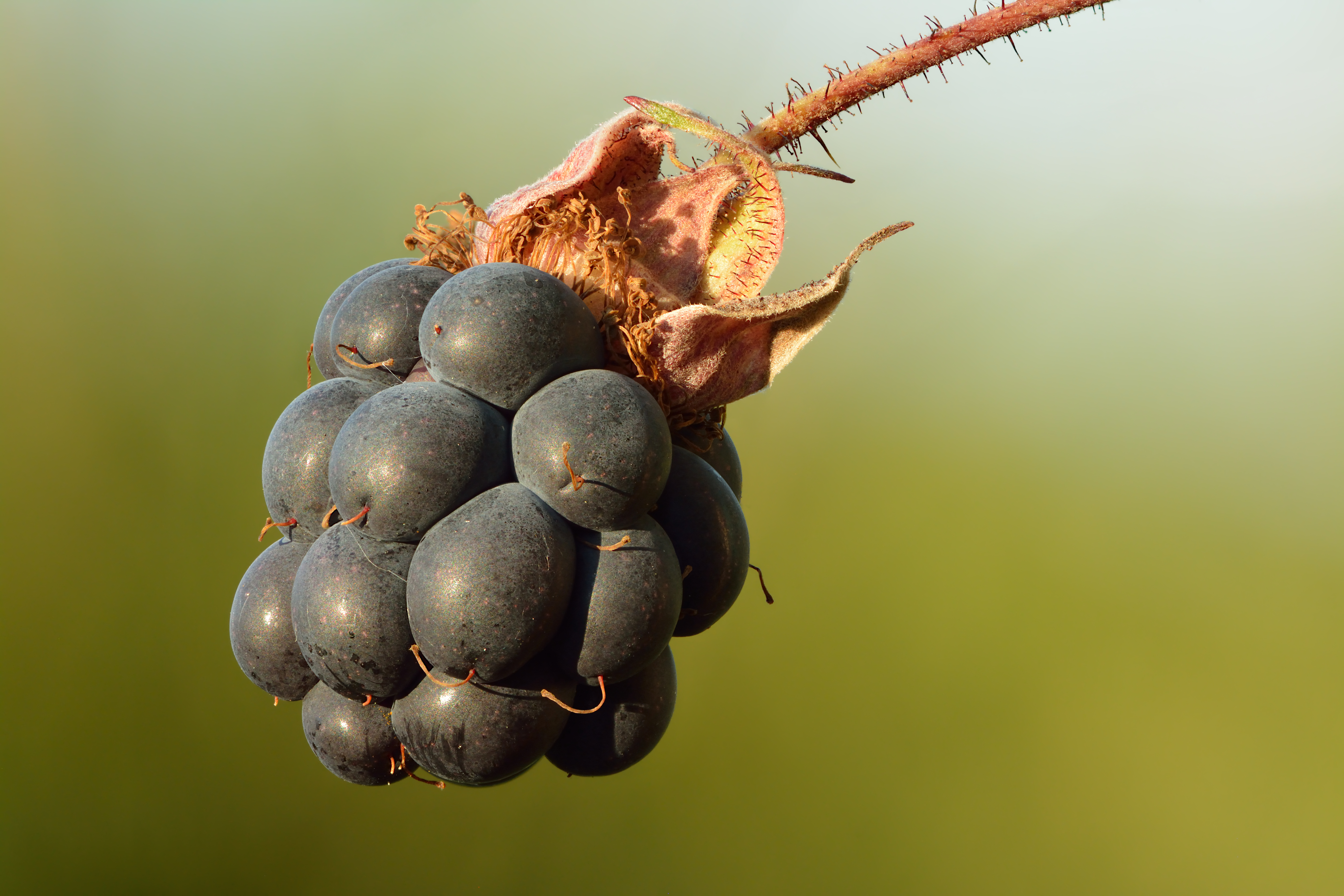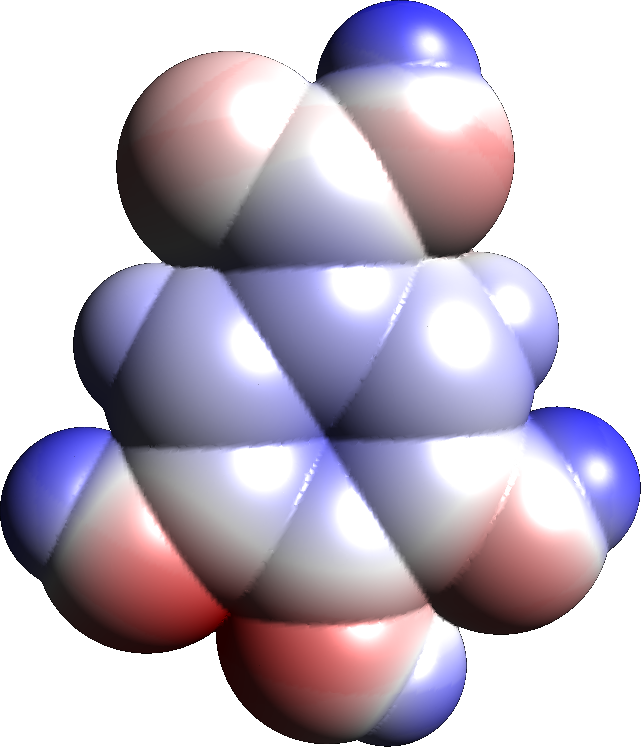|
Sanguiin H-6
Sanguiin H-6 is an ellagitannin. Natural occurrence Sanguiin H-6 can be found in Rosaceae such as the great burnet ('' Sanguisorba officinalis''), in strawberries ('' Fragaria × ananassa'') and in ''Rubus'' species such as red raspberries (''Rubus idaeus'') or cloudberries ('' Rubus chamaemorus''). Chemistry Sanguiin H-6 is dimer of casuarictin linked by a bond between the gallic acid residue and one of the hexahydroxydiphenic acid units. It has sanguisorbic acid ester groups as linking units between glucopyranose moieties. Sanguiin H-6 contributes to the in vitro antioxidant Antioxidants are Chemical compound, compounds that inhibit Redox, oxidation, a chemical reaction that can produce Radical (chemistry), free radicals. Autoxidation leads to degradation of organic compounds, including living matter. Antioxidants ... activity of raspberries. References External links Sanguiin H-6 on www.phenol-explorer.eu {{Ellagitannin Ellagitannins Tannin dimers ... [...More Info...] [...Related Items...] OR: [Wikipedia] [Google] [Baidu] |
Ellagitannin
image:Castalagin.svg, 130px, Castalagin is a representative ellagitannin, characterized by coupled gallic acid substituents The ellagitannins are a diverse class of hydrolyzable tannins, a type of polyphenol formed primarily from the oxidative linkage of galloyl groups in 1,2,3,4,6-pentagalloyl glucose. Ellagitannins differ from gallotannins, in that their galloyl groups are linked through C-C bonds, whereas the galloyl groups in gallotannins are linked by depside bonds. Ellagitannins contain various numbers of Hexahydroxydiphenic acid, hexahydroxydiphenoyl units, as well as galloyl units and/or Sanguisorbic acid, sanguisorboyl units bounded to sugar moiety. In order to determine the quantity of every individual unit, the hydrolysis of the extracts with trifluoroacetic acid in methanol/water system is performed. Hexahydroxydiphenic acid, created after hydrolysis, spontaneously lactonized to ellagic acid, and sanguisorbic acid to sanguisorbic acid dilactone, while gallic acid remains ... [...More Info...] [...Related Items...] OR: [Wikipedia] [Google] [Baidu] |
Rosaceae
Rosaceae (), the rose family, is a family of flowering plants that includes 4,828 known species in 91 genera. The name is derived from the type genus '' Rosa''. The family includes herbs, shrubs, and trees. Most species are deciduous, but some are evergreen. They have a worldwide range but are most diverse in the Northern Hemisphere. Many economically important products come from the Rosaceae, including various edible fruits, such as apples, pears, quinces, apricots, plums, cherries, peaches, raspberries, blackberries, loquats, strawberries, rose hips, hawthorns, and almonds. The family also includes popular ornamental trees and shrubs, such as roses, meadowsweets, rowans, firethorns, and photinias. Among the most species-rich genera in the family are '' Alchemilla'' (270), '' Sorbus'' (260), ''Crataegus'' (260), '' Cotoneaster'' (260), '' Rubus'' (250), and ''Prunus'' (200), which contains the plums, cherries, peaches, apricots, and almonds. However, all of th ... [...More Info...] [...Related Items...] OR: [Wikipedia] [Google] [Baidu] |
Sanguisorba Officinalis
''Sanguisorba officinalis'', commonly known as great burnet, is a plant in the family Rosaceae, subfamily Rosoideae. It is native throughout the cooler regions of the Northern Hemisphere in Europe, northern Asia, and northern North America. It is a herbaceous perennial plant growing to 1 m tall, which occurs in grasslands, growing well on grassy banks. It flowers June or July. ''Sanguisorba officinalis'' is an important food plant for the European large blue butterflies '' Phengaris nausithous'' and '' P. teleius''.World Conservation Monitoring Centre 1996. . Downloaded on 6 October 2010 Commercial uses Use is made of its extensive root system for erosion control, as well as a bioremediator, used to reclaim derelict sites such as landfills. Ornamental ''Sanguisorba officinalis'' is one of several ''Sanguisorba'' species cultivated as ornamental plants. The cultivar 'Tanna' is widely available, and has won the Royal Horticultural Society's Award of Garden Merit. The synonym '' ... [...More Info...] [...Related Items...] OR: [Wikipedia] [Google] [Baidu] |
Fragaria × Ananassa
The garden strawberry (or simply strawberry; ''Fragaria × ananassa'') is a widely grown hybrid plant cultivated worldwide for its fruit. The genus ''Fragaria'', the strawberries, is in the rose family, Rosaceae. The fruit is appreciated for its aroma, bright red colour, juicy texture, and sweetness. It is eaten either fresh or in prepared foods such as jam, ice cream, and chocolates. Artificial strawberry flavourings and aromas are widely used in commercial products. Botanically, the strawberry is not a berry, but an aggregate accessory fruit. Each apparent 'seed' on the outside of the strawberry is actually an achene, a botanical fruit with a seed inside it. The garden strawberry was first bred in Brittany, France, in the 1750s via a cross of '' F. virginiana'' from eastern North America and '' F. chiloensis'', which was brought from Chile by Amédée-François Frézier in 1714. Cultivars of ''F.'' × ''ananassa'' have replaced the woodland strawberry '' F. vesca'' in co ... [...More Info...] [...Related Items...] OR: [Wikipedia] [Google] [Baidu] |
Rubus
''Rubus'' is a large and diverse genus of flowering plants in the rose family, Rosaceae, subfamily Rosoideae, most commonly known as brambles. Fruits of various species are known as raspberries, blackberries, dewberries, and bristleberries. It is a diverse genus, with the estimated number of ''Rubus'' species varying from 250 to over 1000, found across all continents except Antarctica. Most of these plants have woody stems with prickles like roses; spines, bristles, and gland-tipped hairs are also common in the genus. The ''Rubus'' fruit, sometimes called a bramble fruit, is an aggregate of drupelets. The term ''cane fruit'' or ''cane berry'' applies to any ''Rubus'' species or hybrid which is commonly grown with supports such as wires or canes, including raspberries, blackberries, and hybrids such as loganberry, boysenberry, marionberry and tayberry. The stems of such plants are also referred to as ''canes''. Description Bramble bushes typically grow as shrubs (t ... [...More Info...] [...Related Items...] OR: [Wikipedia] [Google] [Baidu] |
Rubus Idaeus
''Rubus idaeus'' (raspberry, also called red raspberry or occasionally European red raspberry to distinguish it from other raspberry species) is a red-fruited species of ''Rubus'' native to Europe and northern Asia and commonly cultivated in other temperate regions. Taxonomy A closely related plant in North America, sometimes regarded as the Variety (biology), variety ''Rubus idaeus'' var. ''strigosus'', is more commonly treated as a distinct species, ''Rubus strigosus'' (American red raspberry), as is done here. Red-fruited cultivated raspberries, even in North America, are generally ''Rubus idaeus'' or horticultural derivatives of hybrids of ''R. idaeus'' and ''R. strigosus;'' these plants are all addressed in the present article. Description Plants of ''Rubus idaeus'' are generally perennial plant, perennials, which bear biennial plant, biennial stems ("canes") from a perennial root system. In its first year, a new, unbranched stem ("primocane") grows vigorously to its full h ... [...More Info...] [...Related Items...] OR: [Wikipedia] [Google] [Baidu] |
Rubus Chamaemorus
''Rubus chamaemorus'' is a species of flowering plant in the rose family. Its English common names include cloudberry, Nordic berry, bakeapple (in Newfoundland and Labrador), knotberry and knoutberry (in England), aqpik or low-bush salmonberry (in Alaska – not to be confused with salmonberry, '' Rubus spectabilis''), and averin or evron (in Scotland). A herbaceous perennial, it produces amber-colored, edible fruit similar to the blackberry. It is native to cool temperate regions, alpine and Arctic tundra, and boreal forest. Description Unlike most ''Rubus'' species, the cloudberry is dioecious, and fruit production by a female plant requires pollination from a male plant. The cloudberry grows to high. The leaves alternate between having five and seven soft, handlike lobes on straight, branchless stalks. After pollination, the white (sometimes reddish-tipped) flowers form raspberry-sized aggregate fruits, which are more plentiful in wooded rather than sun-exposed habitats ... [...More Info...] [...Related Items...] OR: [Wikipedia] [Google] [Baidu] |
Dimer (chemistry)
In chemistry, dimerization is the process of joining two identical or similar Molecular entity, molecular entities by Chemical bond, bonds. The resulting bonds can be either strong or weak. Many symmetrical chemical species are described as dimers, even when the monomer is unknown or highly unstable. The term ''homodimer'' is used when the two subunits are identical (e.g. A–A) and ''heterodimer'' when they are not (e.g. A–B). The reverse of dimerization is often called Dissociation (chemistry), dissociation. When two oppositely-charged ions associate into dimers, they are referred to as ''Bjerrum pairs'', after Danish chemist Niels Bjerrum. Noncovalent dimers Anhydrous carboxylic acids form dimers by hydrogen bonding of the acidic hydrogen and the carbonyl oxygen. For example, acetic acid forms a dimer in the gas phase, where the monomer units are held together by hydrogen bonds. Many OH-containing molecules form dimers, e.g. the water dimer. Dimers that form based on w ... [...More Info...] [...Related Items...] OR: [Wikipedia] [Google] [Baidu] |
Casuarictin
Casuarictin is an ellagitannin, a type of hydrolysable tannin. It can be found in ''Casuarina'' and ''Stachyurus'' species.Tannins of Casuarina and Stachyurus species. I: Structures of pendunculagin, casuarictin, strictinin, casuarinin, casuariin, and stachyurin. Okuda T., Yoshida T., Ashida M. and Yazaki K., Journal of the Chemical Society, 1983, number 8, pages 1765-1772, It is formed from two hexahydroxydiphenic acid units and one gallic acid unit linked to a glucose molecule. The molecule is formed from tellimagrandin II, itself formed from pentagalloyl glucose via oxidation. Casuarictin is transformed into pedunculagin via loss of a gallate group, and further into castalagin via glucose pyranose ring opening. Oligomers Sanguiin H-6 is a dimer, Lambertianin C Lambertianin C is an ellagitannin. Natural occurrence Lambertianin C can be found in ''Rubus'' species such as '' Rubus lambertianus'', in cloudberries ('' Rubus chamaemorus'') and in red raspberries (''Rubus ida ... [...More Info...] [...Related Items...] OR: [Wikipedia] [Google] [Baidu] |
Gallic Acid
Gallic acid (also known as 3,4,5-trihydroxybenzoic acid) is a trihydroxybenzoic acid with the formula C6 H2( OH)3CO2H. It is classified as a phenolic acid. It is found in gallnuts, sumac, witch hazel, tea leaves, oak bark, and other plants. It is a white solid, although samples are typically brown owing to partial oxidation. Salts and esters of gallic acid are termed "gallates". Its name is derived from oak galls, which were historically used to prepare tannic acid. Despite the name, gallic acid does not contain gallium. Isolation and derivatives Gallic acid is easily freed from gallotannins by acidic or alkaline hydrolysis. When heated with concentrated sulfuric acid, gallic acid converts to rufigallol. Hydrolyzable tannins break down on hydrolysis to give gallic acid and glucose or ellagic acid and glucose, known as gallotannins and ellagitannins, respectively. Biosynthesis Gallic acid is formed from 3-dehydroshikimate by the action of the enzyme shikimat ... [...More Info...] [...Related Items...] OR: [Wikipedia] [Google] [Baidu] |
Hexahydroxydiphenic Acid
Hexahydroxydiphenic acid is an organic compound with the formula HO)3C6HCO2Hsub>2. It is the oxidatively coupled derivative of gallic acid It is a white solid, although samples are typically brown owing to oxidation. Occurrence left, 142px, Ellagic acid. Luteic acid and ellagic acid are the mono- and di lactone of hexahydroxydiphenic acid, respectively. Hexahydroxydiphenic acid is a component of some ellagitannin image:Castalagin.svg, 130px, Castalagin is a representative ellagitannin, characterized by coupled gallic acid substituents The ellagitannins are a diverse class of hydrolyzable tannins, a type of polyphenol formed primarily from the oxidative link ...s, such as casuarictin. See also * Diphenic acid References Ellagitannins Pyrogallols Biphenyls Trihydroxybenzoic acids {{phenol-stub ... [...More Info...] [...Related Items...] OR: [Wikipedia] [Google] [Baidu] |
Sanguisorbic Acid
Sanguisorbic acid is a constituent of some ellagitannins. It is constituted by a hexahydroxydiphenic acid unit linked by an O-C bond to a gallic acid. The differences with its isomers, valoneic acid and nonahydroxytriphenic acid, are that the hydroxyl that links the hexahydroxydiphenoyl (HHDP) group to the galloyl group belongs to the galloyl group in valoneic acid, while in nonahydroxytriphenic acid, the hexahydroxydiphenic acid unit is linked by a C-C bond to gallic acid Gallic acid (also known as 3,4,5-trihydroxybenzoic acid) is a trihydroxybenzoic acid with the formula C6 H2( OH)3CO2H. It is classified as a phenolic acid. It is found in gallnuts, sumac, witch hazel, tea leaves, oak bark, and other plant .... It is found in 2,3-O-hexahydroxydiphenoyl-4,6-O-sanguisorboyl-(α/β)-glucose, an ellagitannin found in '' Rubus sanctus''. It is also found in lambertianin A, B, C and D, all ellagitannins found in '' Rubus lambertianus''. See also * Valoneic acid R ... [...More Info...] [...Related Items...] OR: [Wikipedia] [Google] [Baidu] |



